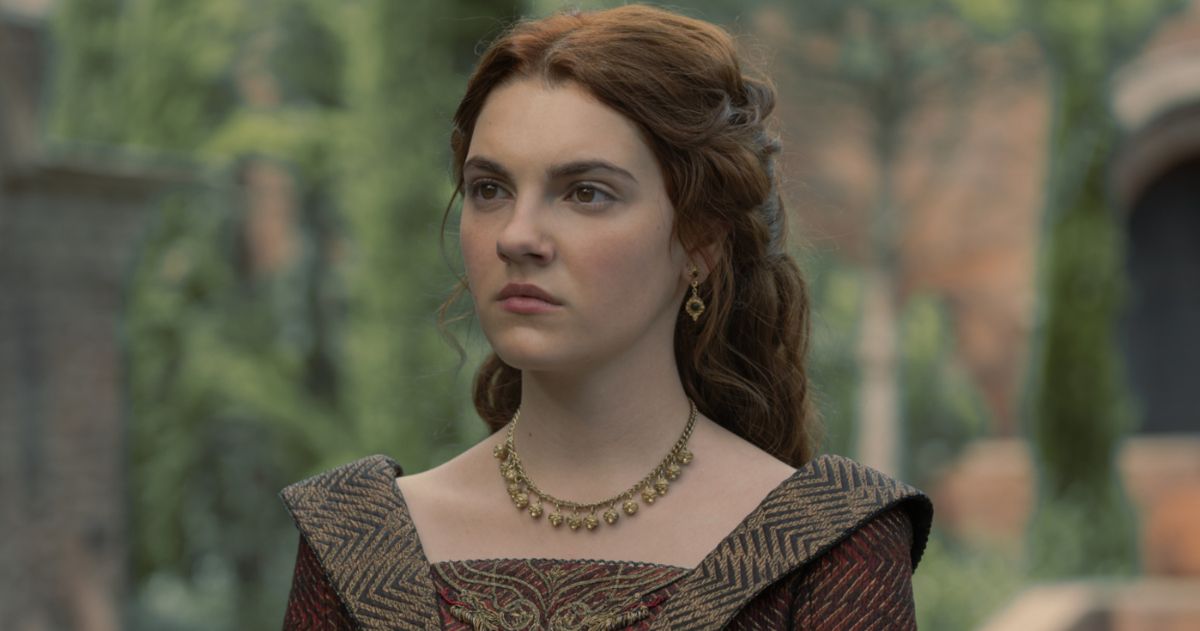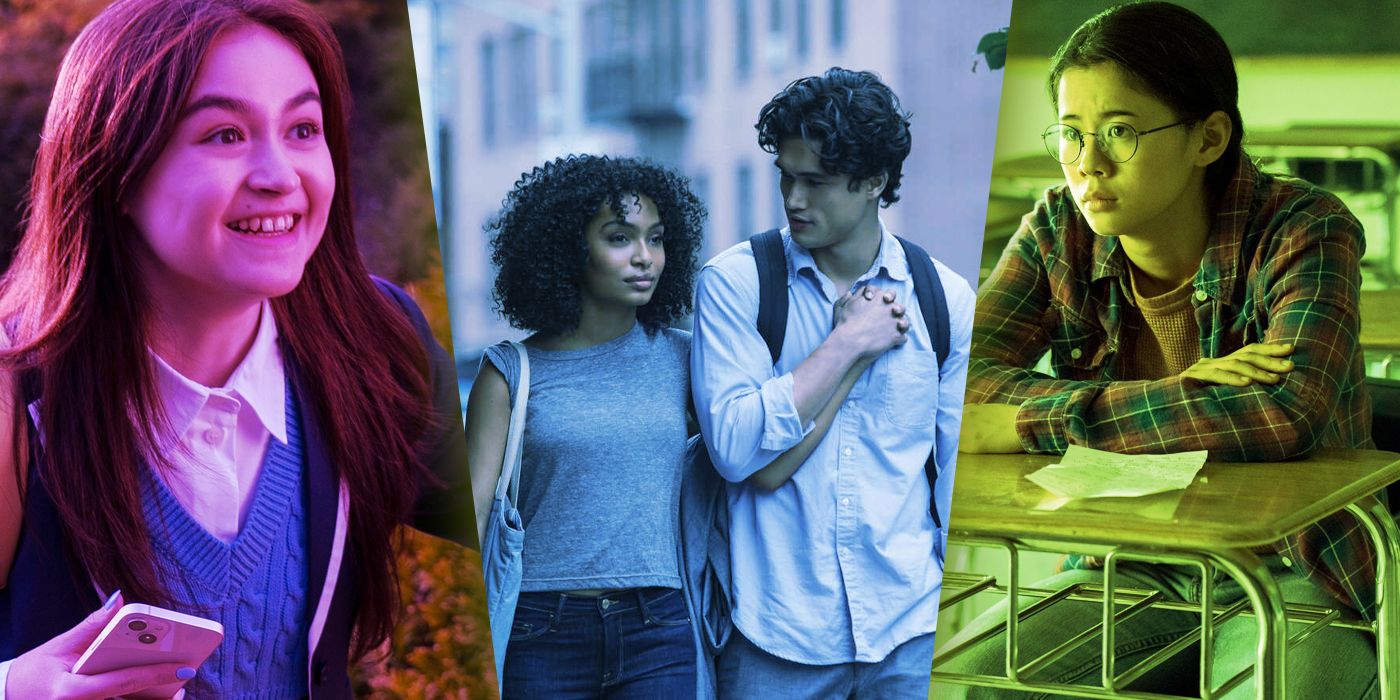Summary
-
Geek Girl
effectively brings to life a vulnerable yet buoyant teen navigating social cliques and high school. - The show strikes a balance between humor and heart, depicting Harriet’s social awkwardness and desire for self-discovery with wit and depth.
- Netflix’s adaptation stays faithful to the source material, successfully capturing the essence of the character’s neurodiversity and self-exploration.
Netflix has found its next young adult series hit with Geek Girl, based on a British young adult novel about an awkward, neurodiverse teenage girl thrown into the spotlight as she embarks on a journey into the fashion world. Adapting the work of Holly Smale, the show follows 15-year-old Harriet Manners (Emily Carey) as she navigates the challenges of being a self-declared geek in high school and the criticism of social cliques.
The series doesn’t shy away from representing a young girl who’s both vulnerable and buoyant. She loves odd facts, presentations, and logical arguments. It captures the spirit of the character written in the book and effectively brings her story to life.
Geek Girl Does an Excellent Job Representing Complex Characters
Netflix’s adaptation of Geek Girl excels in depicting Harriet’s neurodiversity and the characteristics that make her a relatable protagonist. By staying true to her quirks and insecurities, audiences are introduced to the experiences of a young girl that mirrors their own. Being 15 years old and feeling out of place is a rite of passage for everyone, and translating that to the screen can be difficult, and the creators often do not get the reaction they intended.
Related
15 Young Adult Book Adaptations That Should Have Been Better
Young Adult book adaptations have had their fair share of successes and failures, but these 15 films in particular should have been better.
The character could come across as too naive or too “pick me,” but Harriet’s portrayal has made her an endearing character to the audience. Emily Carey’s performance channels the essence of the girl from the novel and brilliantly adapts her mannerisms to the screen, given that she’s a fan of the book herself. She revealed in an interview with The Independent that she shared a similar experience with bullies at school and that this project brought a sense of healing for her.
“It felt weirdly healing for my inner child because I went through a similar thing, and struggled to fit in school. I’m a self-proclaimed geek.”
In the same interview, she added that navigating life as a teenager is hard, and having someone like Harriet to relate to was important for her and how she saw herself.
“Teenage girls, they’re just very insecure people. Everyone’s struggling at that age, and we tend to take it out on each other.”
Harriet leans on her best friend Natalie Grey (Rochelle Harrington) when the criticism from the cool kids is too much and has her reliable neighbor, Toby Pilgrim (Zac Looker) to remind her to drown out the noise. They remind her that it’s okay to be herself and that she’s enough.
Geek Girl Creates a Balance Between Humor and Heart
Humor and emotional depth are essential components in a young adult series. It can be difficult to harmonize both factors, and some shows have been known to tip the scale towards one side and lose sight of the other. Geek Girl manages to achieve the perfect balance between the two through its witty dialogue, the comical situations Harriet finds herself in, and the moments of vulnerability and self-discovery. These moments are the ones that engage an audience, and the creators nailed it.

Related
Emily Carey Opens Up on Her House of the Dragon Run
The actor played Queen Alicent Hightower during the first five episodes of House of the Dragon.
Harriet is socially awkward, and there are instances throughout the show where she misses social cues, which results in the people around her misunderstanding her intentions or misinterpreting her words. She’s put in situations that challenge her, and this creates an inner conflict. The audience can see a duality in Harriet: the side that wants to break free of her shell and the one that finds comfort in being in that shell.
When a career in modeling falls into her lap, Harriet, like most teenage girls, sees that as an opportunity to change who she is. The more she immerses herself in the world of fashion, the more you see her come into her own and own herself and her personality. The Harriet audiences see on screen is the Harriet from the book, and that is a testament to Carey’s performance and understanding of the persona she’s adapting on the screen.
Geek Girl Stays True to the Source Material
Changing parts of the narrative isn’t a new concept when adapting a novel to fit the TV screen. Creators must make changes to reflect the times and create a cohesive story that fits into one season or within a time constraint in a film. This isn’t the case for Geek Girl. The showrunners succeeded in bringing Smale’s vision to fruition from the chaos of the fashion industry to the introspective moments.

Related
10 Young Adult Movies and TV Shows Featuring Interracial Love, Ranked
These 10 young adult movies and TV shows demonstrate that love can be between anyone.
The adaptation maintains the integrity Smale poured into when she originally wrote the story. Since its release, Smale has faced criticism for how autism is depicted in the series. She defended the show and Carey’s portrayal of Harriet on X.
She continued by saying that people have a misconception of what autism looks like, and that’s a result of inauthentic representation. While the show or novel doesn’t explicitly label Harriet as being on the spectrum, the signs are there. With Smale involved in the production process, Netflix seamlessly accomplished transitioning Harriet’s story from page to screen, leaving fans wanting more. Geek Girl is now streaming on Netflix.



